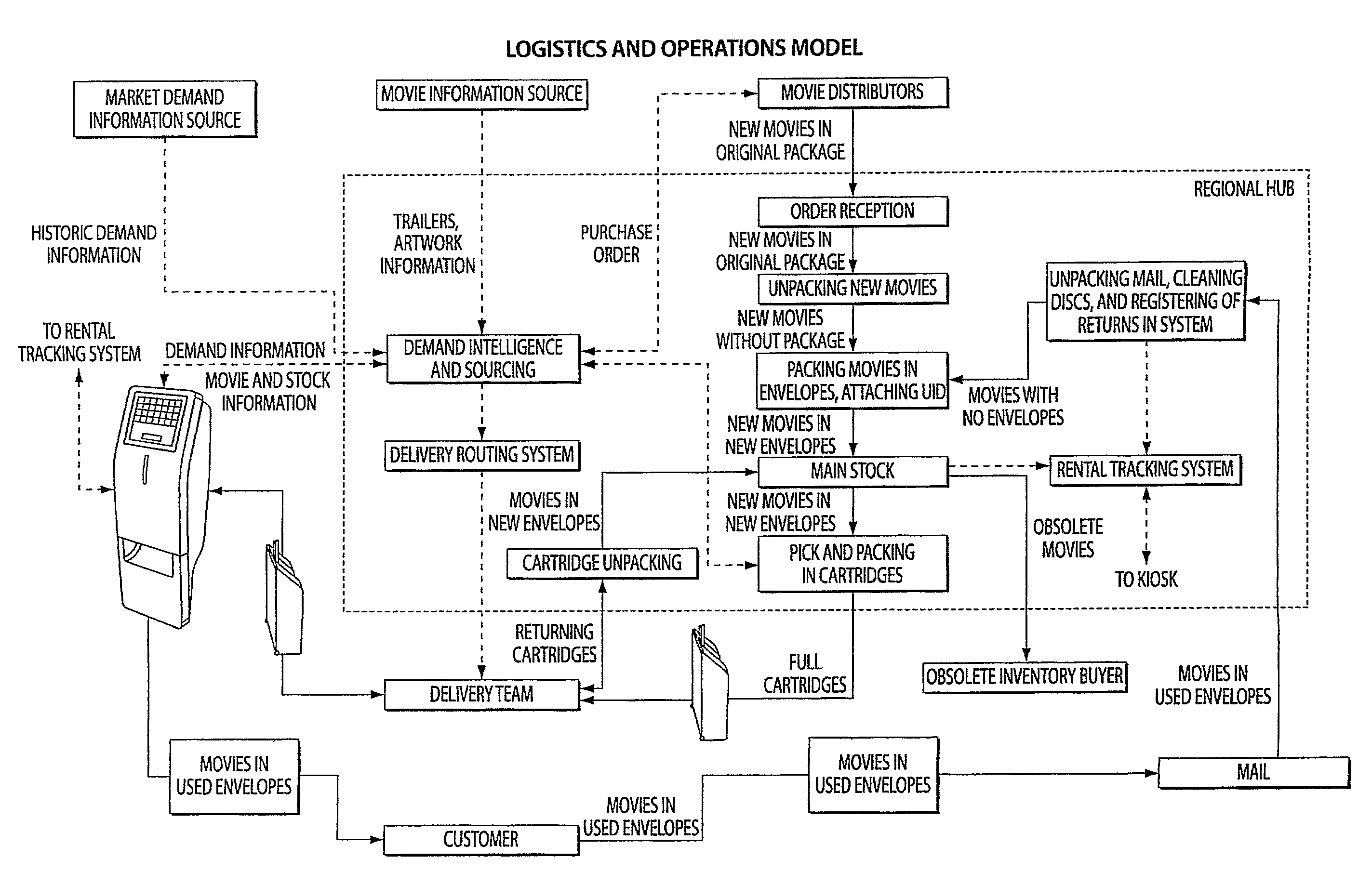Systems, methods and devices for dispensing products from a kiosk
a technology for kiosks and products, applied in the field of kiosks, can solve the problems of large machines requiring a large footprint, large sales and repair costs, and wide adoption, and achieve the effect of convenient replenishment and strong quality control
- Summary
- Abstract
- Description
- Claims
- Application Information
AI Technical Summary
Benefits of technology
Problems solved by technology
Method used
Image
Examples
Embodiment Construction
[0038]Applicants will now describe the claimed invention in terms of particular embodiments. The invention is not limited in its application to the details of construction and the arrangement of components set forth in the exemplified embodiments, nor in the drawings. The invention is capable of other embodiments and of being practiced or of being carried out in various ways.
[0039]As represented in FIG. 8, a user approaches a kiosk (10) and interacts with touch screen (18) to enter and obtain information to select a title. The touch screen provides the users input to the central processing unit (the kiosk computer brain) (30), which interacts with the local database (32). The local database stores digital information about the 40 titles contained in the kiosk and previous transactions, as well as the software required for the interface and the general operation of the kiosk.
[0040]The user purchases the title via the electronic payment method, specifically a magnetic band reader (16)...
PUM
 Login to View More
Login to View More Abstract
Description
Claims
Application Information
 Login to View More
Login to View More - R&D
- Intellectual Property
- Life Sciences
- Materials
- Tech Scout
- Unparalleled Data Quality
- Higher Quality Content
- 60% Fewer Hallucinations
Browse by: Latest US Patents, China's latest patents, Technical Efficacy Thesaurus, Application Domain, Technology Topic, Popular Technical Reports.
© 2025 PatSnap. All rights reserved.Legal|Privacy policy|Modern Slavery Act Transparency Statement|Sitemap|About US| Contact US: help@patsnap.com



